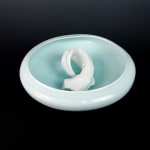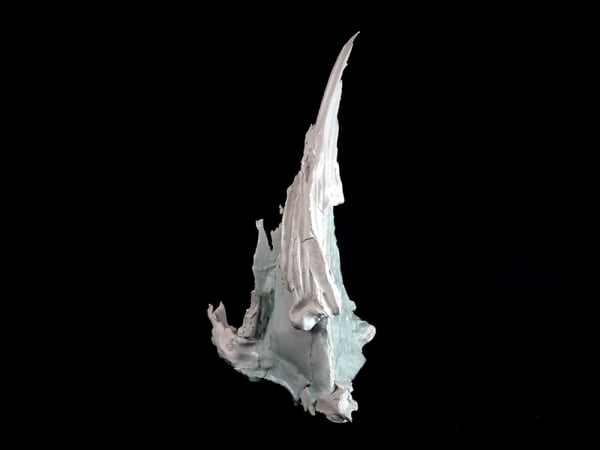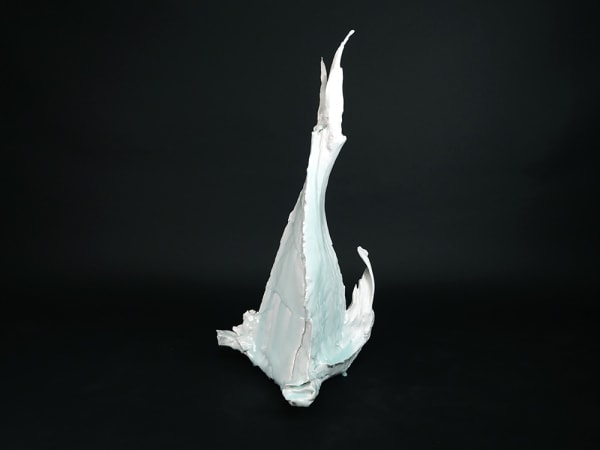Kato Tsubusa 加藤委 Japanese, b. 1962
Porcelain Moribana Vase/Sculpture "Kyogoku-Moon" No.10
Porcelain and celadon glaze
H5” x Dia15”
H13 x Dia38cm
H13 x Dia38cm
Signed at the base
%3Cdiv%20class%3D%22artist%22%3EKato%20Tsubusa%20%E5%8A%A0%E8%97%A4%E5%A7%94%3C/div%3E%3Cdiv%20class%3D%22title_and_year%22%3E%3Cspan%20class%3D%22title_and_year_title%22%3EPorcelain%20Moribana%20Vase/Sculpture%20%22Kyogoku-Moon%22%20No.10%3C/span%3E%3C/div%3E%3Cdiv%20class%3D%22medium%22%3EPorcelain%20and%20celadon%20glaze%3C/div%3E%3Cdiv%20class%3D%22dimensions%22%3EH5%E2%80%9D%20x%20Dia15%E2%80%9D%3Cbr/%3E%0AH13%20x%20Dia38cm%3C/div%3E%3Cdiv%20class%3D%22signed_and_dated%22%3ESigned%20at%20the%20base%3C/div%3E
Further images
-
(View a larger image of thumbnail 1
)

-
(View a larger image of thumbnail 2
)

-
(View a larger image of thumbnail 3
)

-
(View a larger image of thumbnail 4
)

-
(View a larger image of thumbnail 5
)

-
(View a larger image of thumbnail 6
)

-
(View a larger image of thumbnail 7
)

-
(View a larger image of thumbnail 8
)

Born in Onadacho, Tajimi-city, Gifu, Japan, Kato Tsubusa is a contemporary artist who is a master of the celadon glaze. First imported from China to Japan as treasured porcelain ware...
Born in Onadacho, Tajimi-city, Gifu, Japan, Kato Tsubusa is a contemporary artist who is a master of the celadon glaze. First imported from China to Japan as treasured porcelain ware during Heian period, it was only in the 17th century that Japanese potters began to produce their own celadon wares. The glaze was immediately popular with the Japanese clientele in the Heian period due to its greenish-blue tinge. Later on in the 17th century, the taste for celadon began to lean towards an icy blue, clear glaze known to us as “Seihakuji”. As blue gradates to white, Kato’s glaze evokes glacial forms or a cold winter sky. His works draw attention to celadon by emphasizing the gravity and weight of glaze drips.
In this series, Kato has created Moribana that double as sculptures. His intention is that they should always be on display, whether accompanied by natural flora or fauna, or by a white porcelain sculpture in its center. Pay attention to the lip and how it captures the speed of a wheel. Movement and dynamism are unmistakable themes in this series. Each piece was modeled after sightings of the moon during Kato's travels around Hokkaido, capturing its changing nature from different views.
"Kyogoku moon No. 10" was inspired by the view of the moon from the town Kyogoku in Hokkaido, Japan.
Key characteristics of celadon production include: fired in high temperature, firing in a reducing atmosphere, either/both clay or/and glaze contains iron. The colors of celadon are varied due to the content of iron in the glaze, and atmosphere of firing, it can be beige to blue and green.
In this series, Kato has created Moribana that double as sculptures. His intention is that they should always be on display, whether accompanied by natural flora or fauna, or by a white porcelain sculpture in its center. Pay attention to the lip and how it captures the speed of a wheel. Movement and dynamism are unmistakable themes in this series. Each piece was modeled after sightings of the moon during Kato's travels around Hokkaido, capturing its changing nature from different views.
"Kyogoku moon No. 10" was inspired by the view of the moon from the town Kyogoku in Hokkaido, Japan.
Key characteristics of celadon production include: fired in high temperature, firing in a reducing atmosphere, either/both clay or/and glaze contains iron. The colors of celadon are varied due to the content of iron in the glaze, and atmosphere of firing, it can be beige to blue and green.
Share
- Tumblr
Related artworks
-
 Kato Tsubusa 加藤委Porcelain Moribana Vase/Sculpture “Next-Moon" No.11
Kato Tsubusa 加藤委Porcelain Moribana Vase/Sculpture “Next-Moon" No.11 -
 Kato Tsubusa 加藤委Porcelain Moribana Vase/Sculpture "Sapporo-Moon"No.7Sold
Kato Tsubusa 加藤委Porcelain Moribana Vase/Sculpture "Sapporo-Moon"No.7Sold -
 Kato Tsubusa 加藤委Porcelain Moribana Vase/Sculpture "Showashinzan-Moon" No.8
Kato Tsubusa 加藤委Porcelain Moribana Vase/Sculpture "Showashinzan-Moon" No.8 -
 Kato Tsubusa 加藤委Object 2, 2006
Kato Tsubusa 加藤委Object 2, 2006 -
 Kato Tsubusa 加藤委Object, 2006
Kato Tsubusa 加藤委Object, 2006 -
 Wada Akira 和田的流氷 Ice FlowSold
Wada Akira 和田的流氷 Ice FlowSold













